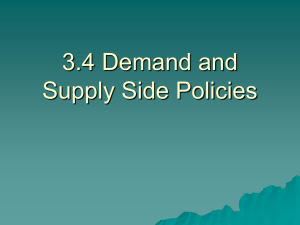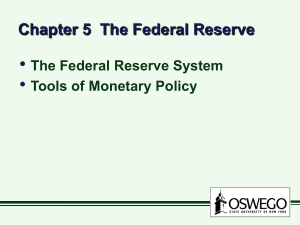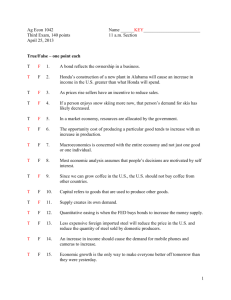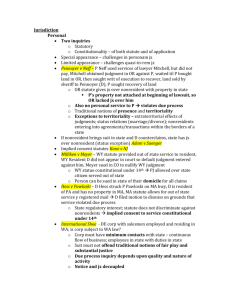Understanding Fed Talk, A Guide to Commonly Used Federal Open
advertisement
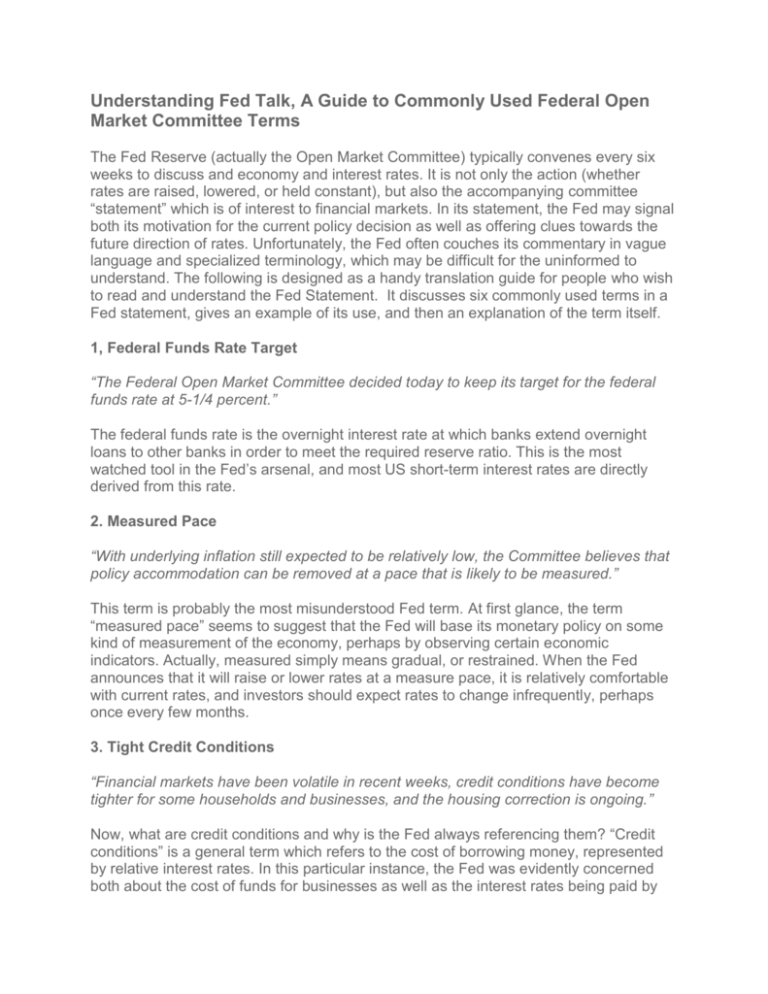
Understanding Fed Talk, A Guide to Commonly Used Federal Open Market Committee Terms The Fed Reserve (actually the Open Market Committee) typically convenes every six weeks to discuss and economy and interest rates. It is not only the action (whether rates are raised, lowered, or held constant), but also the accompanying committee “statement” which is of interest to financial markets. In its statement, the Fed may signal both its motivation for the current policy decision as well as offering clues towards the future direction of rates. Unfortunately, the Fed often couches its commentary in vague language and specialized terminology, which may be difficult for the uninformed to understand. The following is designed as a handy translation guide for people who wish to read and understand the Fed Statement. It discusses six commonly used terms in a Fed statement, gives an example of its use, and then an explanation of the term itself. 1, Federal Funds Rate Target “The Federal Open Market Committee decided today to keep its target for the federal funds rate at 5-1/4 percent.” The federal funds rate is the overnight interest rate at which banks extend overnight loans to other banks in order to meet the required reserve ratio. This is the most watched tool in the Fed’s arsenal, and most US short-term interest rates are directly derived from this rate. 2. Measured Pace “With underlying inflation still expected to be relatively low, the Committee believes that policy accommodation can be removed at a pace that is likely to be measured.” This term is probably the most misunderstood Fed term. At first glance, the term “measured pace” seems to suggest that the Fed will base its monetary policy on some kind of measurement of the economy, perhaps by observing certain economic indicators. Actually, measured simply means gradual, or restrained. When the Fed announces that it will raise or lower rates at a measure pace, it is relatively comfortable with current rates, and investors should expect rates to change infrequently, perhaps once every few months. 3. Tight Credit Conditions “Financial markets have been volatile in recent weeks, credit conditions have become tighter for some households and businesses, and the housing correction is ongoing.” Now, what are credit conditions and why is the Fed always referencing them? “Credit conditions” is a general term which refers to the cost of borrowing money, represented by relative interest rates. In this particular instance, the Fed was evidently concerned both about the cost of funds for businesses as well as the interest rates being paid by households. Both rates typically trade at a spread to US government bonds, which are considered to be the least risky investment in the world. When credit conditions tighten, it means investors are demanding that borrowers pay higher interest rates in order to compensate investors for what they perceive to be a higher risk of default. Thus, it is not the tighter credit conditions (i.e. higher market interest rates) which are of prime concern to the Fed, but rather the market perception that borrowers will have more difficulty in making good on their loans. In a way, this signals declining investor confidence in the economy. 4. Firming/tightening “The Committee judges that some inflation risks remain. The extent and timing of any additional firming that may be needed to address these risks will depend on the evolution of the outlook for both inflation and economic growth.” Firming/tightening is another pretentious phrase, used to indicate a hike, or rise, in interest rates. “Tight” monetary policy is synonymous with high interest rates, and “loose” monetary policy refers to low interest rates. The reasoning is that when rates are high, businesses and consumers are less willing to borrow, which slows the expansion of the money supply. Here, the Fed has issued a direct warning that it may have to raise interest rates if inflation fails to stabilize. 5. Accommodative/easy Monetary Policy “The Committee believes that, even after this action, the stance of monetary policy remains accommodative and, coupled with robust underlying growth in productivity, is providing ongoing support to economic activity.” Monetary policy is accommodative when interest rates are low. The reasoning behind this term is that low interest rates are designed to “accommodate” businesses and consumers, by encouraging them to borrow money and stoke the economy. Thus, the Fed noted that its accommodative stance was expected to provide support to the economy. 6. Sustainable Growth and Price Stability “The Committee perceives that, with appropriate monetary policy action, the upside and downside risks to the attainment of both sustainable growth and price stability should be kept roughly equal.” While the definition of this phrase should be self-evident, it is worth drawing attention to, because it represents a succinct version of the Fed’s mandate: to maintain economic growth at reasonable levels and to minimize inflation. In short, even though the Fed works by controlling the money supply, its goals are always economic growth and/or price stability.



